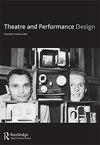基斯勒的“无尽剧场”造型:遗产可视化的paradata方法
Q2 Arts and Humanities
引用次数: 1
摘要
本文是我对使用基于计算机的三维可视化作为研究方法的研究结果。弗雷德里克·基斯勒(Frederick Kiesler)未实现的“无尽剧场”(1916-26)项目被用作遗产可视化中表达“para”的案例研究。这建立在《伦敦宪章》(2008)中概述的知识透明原则的基础上。我这篇文章的总体目标是论证para - ata作为阅读和设计遗产可视化的关键框架。这特别侧重于从建模者的角度和“厚描绘”的实用技术的程序见解,包括“para - ata地图”的建议。为了证明这些观点,文章详细介绍了“无尽剧院”项目的两个背景发现——关于“连续运动”和“观众座位”的原则——这些发现是通过可视化过程本身出现的。文章最后评价了para - ata作为一个关键框架和基于计算机的3D可视化作为一种史学方法,它认为,这为Kiesler未实现的戏剧项目提供了新的见解。本文章由计算机程序翻译,如有差异,请以英文原文为准。
Modelling Kiesler’s Endless Theatre: approaches to paradata for heritage visualization
ABSTRACT This article is an outcome of my investigations into the use of computer-based 3D visualization as a research methodology. Frederick Kiesler’s unrealized Endless Theatre (1916–26) project is employed as a case study for articulating ‘paradata’ in heritage visualization. This builds upon the principles of knowledge transparency outlined within the London Charter (2008). My overall objective for this article is to argue paradata as a critical framework for reading and designing heritage visualization. This is particularly focused on the procedural insights from a modeller’s perspective and practical techniques for ‘thick depiction’, including a proposal for ‘paradata maps’. To evidence these positions, the article details two contextual findings on the Endless Theatre project – concerning the principles of ‘continuous movement’ and ‘audience seating’ – that emerged through the visualization process itself. The article concludes with an appraisal of paradata as a critical framework and computer-based 3D visualization as a historiographic method that, it argues, has offered new insights into Kiesler’s unrealized theatre project.
求助全文
通过发布文献求助,成功后即可免费获取论文全文。
去求助
来源期刊

Theatre and Performance Design
Arts and Humanities-Visual Arts and Performing Arts
CiteScore
0.40
自引率
0.00%
发文量
14
 求助内容:
求助内容: 应助结果提醒方式:
应助结果提醒方式:


